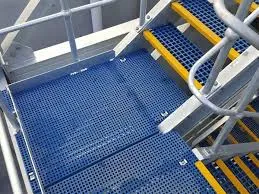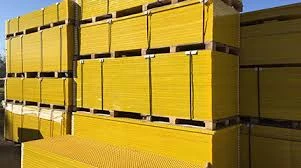
-
 Afrikaans
Afrikaans -
 Albanian
Albanian -
 Amharic
Amharic -
 Arabic
Arabic -
 Armenian
Armenian -
 Azerbaijani
Azerbaijani -
 Basque
Basque -
 Belarusian
Belarusian -
 Bengali
Bengali -
 Bosnian
Bosnian -
 Bulgarian
Bulgarian -
 Catalan
Catalan -
 Cebuano
Cebuano -
 China
China -
 China (Taiwan)
China (Taiwan) -
 Corsican
Corsican -
 Croatian
Croatian -
 Czech
Czech -
 Danish
Danish -
 Dutch
Dutch -
 English
English -
 Esperanto
Esperanto -
 Estonian
Estonian -
 Finnish
Finnish -
 French
French -
 Frisian
Frisian -
 Galician
Galician -
 Georgian
Georgian -
 German
German -
 Greek
Greek -
 Gujarati
Gujarati -
 Haitian Creole
Haitian Creole -
 hausa
hausa -
 hawaiian
hawaiian -
 Hebrew
Hebrew -
 Hindi
Hindi -
 Miao
Miao -
 Hungarian
Hungarian -
 Icelandic
Icelandic -
 igbo
igbo -
 Indonesian
Indonesian -
 irish
irish -
 Italian
Italian -
 Japanese
Japanese -
 Javanese
Javanese -
 Kannada
Kannada -
 kazakh
kazakh -
 Khmer
Khmer -
 Rwandese
Rwandese -
 Korean
Korean -
 Kurdish
Kurdish -
 Kyrgyz
Kyrgyz -
 Lao
Lao -
 Latin
Latin -
 Latvian
Latvian -
 Lithuanian
Lithuanian -
 Luxembourgish
Luxembourgish -
 Macedonian
Macedonian -
 Malgashi
Malgashi -
 Malay
Malay -
 Malayalam
Malayalam -
 Maltese
Maltese -
 Maori
Maori -
 Marathi
Marathi -
 Mongolian
Mongolian -
 Myanmar
Myanmar -
 Nepali
Nepali -
 Norwegian
Norwegian -
 Norwegian
Norwegian -
 Occitan
Occitan -
 Pashto
Pashto -
 Persian
Persian -
 Polish
Polish -
 Portuguese
Portuguese -
 Punjabi
Punjabi -
 Romanian
Romanian -
 Russian
Russian -
 Samoan
Samoan -
 Scottish Gaelic
Scottish Gaelic -
 Serbian
Serbian -
 Sesotho
Sesotho -
 Shona
Shona -
 Sindhi
Sindhi -
 Sinhala
Sinhala -
 Slovak
Slovak -
 Slovenian
Slovenian -
 Somali
Somali -
 Spanish
Spanish -
 Sundanese
Sundanese -
 Swahili
Swahili -
 Swedish
Swedish -
 Tagalog
Tagalog -
 Tajik
Tajik -
 Tamil
Tamil -
 Tatar
Tatar -
 Telugu
Telugu -
 Thai
Thai -
 Turkish
Turkish -
 Turkmen
Turkmen -
 Ukrainian
Ukrainian -
 Urdu
Urdu -
 Uighur
Uighur -
 Uzbek
Uzbek -
 Vietnamese
Vietnamese -
 Welsh
Welsh -
 Bantu
Bantu -
 Yiddish
Yiddish -
 Yoruba
Yoruba -
 Zulu
Zulu
Fiberglass Handrail Solutions Durable GRP & Ladder Handrails Get Quote Now
- Introduction to modern safety solutions
- Technical advantages of composite materials
- Industry performance comparison analysis
- Tailoring solutions to project requirements
- Real-world implementation scenarios
- Proper installation techniques and maintenance
- Future outlook for safety infrastructure

(fiberglass handrail)
Why fiberglass handrail
systems dominate modern construction
Safety infrastructure has transformed dramatically with FRP composites emerging as the premier choice. Fiberglass handrail installations have grown 28% annually since 2019 according to Global Market Insights data, displacing traditional materials across commercial, industrial, and public projects. These systems combine GRP's inherent corrosion resistance with structural integrity meeting OSHA 1910.23 and IBC 1017 standards.
Three critical factors drive adoption: complete immunity to rust (saving $120/linear foot in maintenance versus steel), non-conductive properties (essential for electrical facilities), and weight reductions up to 75% compared to concrete. Coastal refineries report 92% fewer replacements after switching from powder-coated steel to pultruded FRP systems. The manufacturing process itself yields sustainability benefits, with production consuming 33% less energy than aluminum according to Department of Energy benchmarks.
Material science advantages in detail
Pultrusion technology creates fiberglass handrail components with consistent strength profiles exceeding 30,000 psi tensile strength. The layered composition combines:
- Structural reinforcement: Continuous glass fibers in resin matrix
- Surface barrier: Non-porous veil preventing moisture ingress
- UV protection: Integrated pigments resisting solar degradation
This architecture delivers key performance characteristics versus conventional options:
| Property | Fiberglass | Stainless Steel | Wood |
|---|---|---|---|
| Maintenance cycles | None | Annual | Biannual |
| Lifecycle cost/ft (20 yrs) | $84 | $217 | $310 |
| Load capacity (lbs) | 2,250 | 1,900 | 850 |
Chemical plants report corrosion-related failures dropped 76% after implementing FRP systems per API 570 inspection records. The non-sparking characteristics make them indispensable in ATEX zones where metal alternatives require special coatings.
Industry supplier benchmarks
Selecting quality manufacturers significantly impacts performance outcomes. Top producers differentiate through:
- ISO 9001-certified pultrusion processes
- Third-party structural validation reports
- Comprehensive resin formulations
Comparative testing data reveals critical variances:
| Manufacturer | Deflection under load | Salt spray resistance | Warranty period |
|---|---|---|---|
| Supplier A | 0.13" | 15,000 hrs | 25 years |
| Supplier B | 0.21" | 8,000 hrs | 10 years |
| Supplier C | 0.18" | 12,000 hrs | 20 years |
Leading suppliers achieve deflection limits 42% below IBC requirements through optimized glass-to-resin ratios verified by UL certification. Post-installation surveys show installations exceeding 97% client satisfaction when utilizing ASTM E84 Class A-rated products.
Engineering flexible configurations
Modern extrusion tooling accommodates virtually any architectural specification without sacrificing structural integrity. Typical customizations include:
- Radius bends with 18"-36" turning radii
- Integrated ADA-compliant top rails
- Specialized brackets for curved surfaces
Digital fabrication techniques reduce lead times by 65% compared to traditional methods. Industrial facilities implement color-coded safety systems using through-pigmented laminates that maintain visibility after surface abrasion. Petrochemical installations increasingly specify conductive variants that prevent static buildup in volatile environments, meeting NFPA 77 standards without metallic components.
Application performance metrics
Municipal wastewater facilities document game-changing results with fiberglass handrails lasting 15+ years versus 3-year average for galvanized steel in hydrogen sulfide environments. Coastal walkways exposed to salt spray demonstrate zero deterioration after eight years of service according to Florida DOT inspection logs.
Electrical substations leverage the material's dielectric properties (tested to 150kV/ft) eliminating ground-fault risks. Major transportation hubs have standardized GRP components after fatigue testing showed less than 0.5mm deformation after 1 million load cycles. Data centers report avoiding electromagnetic interference issues impossible to mitigate with metallic alternatives.
Implementing sustainable installations
Proper implementation begins with anchor spacing at 48" centers using epoxy-sealed stainless hardware. Thermal expansion management requires expansion joints every 20 feet (coefficient: 1.3 x 10-5 in/in°F). Maintenance involves only annual cleaning with non-abrasive solutions, saving facilities approximately $35/linear foot annually compared to painted steel systems.
Composite technicians recommend avoiding silicone-based sealants that compromise adhesion. Load testing every 24 months verifies continued compliance, though accelerated aging projections indicate 40+ year service life in temperate climates. End-of-life recycling programs repurpose material into reinforcing additives for new construction products.
How fiberglass handrails transform safety economics
Lifecycle analysis proves GRP systems deliver 57% lower total ownership costs than any alternatives. As building codes evolve toward stricter corrosion resistance mandates, fiberglass handrails provide future-proof compliance while eliminating repetitive maintenance. Infrastructure planners increasingly adopt these solutions, with transportation authorities reporting 14% faster project completions due to reduced on-site fabrication requirements.
Material science advances continue enhancing performance characteristics. Recent nano-additive formulations increase impact resistance by 22% while maintaining dielectric properties. The market shift toward composite safety systems reflects fundamental reevaluation of value metrics - prioritizing decades of reliable protection over initial material savings. These developments position fiberglass solutions as the default choice for next-generation facilities across all sectors.

(fiberglass handrail)
FAQS on fiberglass handrail
Q: What are the advantages of using a fiberglass handrail over traditional materials?
A: Fiberglass handrails are lightweight, corrosion-resistant, and non-conductive, making them ideal for harsh environments. They also require minimal maintenance compared to metal or wood and won’t rust or rot.
Q: Can GRP handrails be used in outdoor or marine settings?
A: Yes, GRP (glass-reinforced plastic) handrails excel in outdoor and marine environments due to their UV resistance and ability to withstand saltwater, moisture, and extreme temperatures without degradation.
Q: Are fiberglass handrails suitable for industrial ladders and platforms?
A: Absolutely. Fiberglass handrails paired with ladders (Ladder & Handrail systems) are common in industrial settings because they provide durability, electrical insulation, and slip resistance for worker safety.
Q: How do I install a fiberglass handrail system?
A: Fiberglass handrails are pre-fabricated for easy installation using bolts or brackets. Ensure proper anchoring to structures, and follow manufacturer guidelines for spacing and load requirements.
Q: Is GRP handrail customization possible for unique project needs?
A: Yes, GRP handrails can be customized in color, length, and design. Some manufacturers offer tailored solutions for specific load capacities, shapes, or compliance with safety standards.
Latest news
-
Durable FRP Chemical Storage Tanks Corrosion-Resistant SolutionsNewsJun.01,2025
-
Durable Fiber Water Tanks - Lightweight & Corrosion-Resistant SolutionsNewsJun.01,2025
-
FRP Rectangular Tanks Custom Sizes & Corrosion-Resistant DesignNewsJun.01,2025
-
Heavy-Duty Jackhammers for Construction Work - Powerful & DurableNewsMay.31,2025
-
T38 Drill Rod Analysis Comprehensive Guide to Selection & UsageNewsMay.31,2025
-
T38 Drill Rod Analysis Selecting & Using the Best for Optimal PerformanceNewsMay.30,2025









